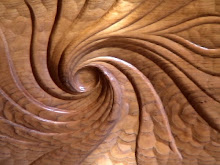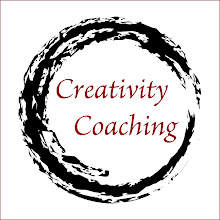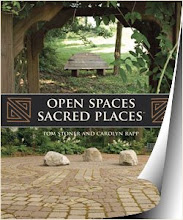 Why is opening to the fresh visions so difficult? Why do we strive to force the world into old, preconceived images rather facilitating the forms and relationships arising within us? For years I have sought clients willing to rediscover their primal relationship to architecture and the land. My intention, to work with them to create designs that intimately respond to the needs and dreams specific to their sites and patterns of living. Instead, people bring grids of borrowed ideas to the table. The unspoken hope is that templets used by others will guide them toward designs that will work from them. What gets missed in the process is discovering the creative spark that can make their homes and workplaces vital links between the forces of nature and their personal modes of dwelling in the world.
Why is opening to the fresh visions so difficult? Why do we strive to force the world into old, preconceived images rather facilitating the forms and relationships arising within us? For years I have sought clients willing to rediscover their primal relationship to architecture and the land. My intention, to work with them to create designs that intimately respond to the needs and dreams specific to their sites and patterns of living. Instead, people bring grids of borrowed ideas to the table. The unspoken hope is that templets used by others will guide them toward designs that will work from them. What gets missed in the process is discovering the creative spark that can make their homes and workplaces vital links between the forces of nature and their personal modes of dwelling in the world.I'm not talking about creating wild forms that display the ego's cleverness. I'm not talking about developing innovative designs just to be different or exotic. I'm talking about engaging the basic creative process of looking deeply into he design of the human spirit, the design of the nature and the design of culture to create buildings that are born from naturally emerging patterns. This process is not about dreaming old dreams of another people, time and place. It's about participating in the dream that is emerging from this era and location.
Architects and designers are also caught in this habit of looking in the rearview mirror while driving toward the future. It's standard procedure for architects to see design as a matter of already defined styles. "Do you want Craftsman or Contemporary?" They may say they long to create cutting edge work or a home the suits your needs, but their reference points are not the designs of the forces coming together on a particular project. Their bibles are the latest magazines and books that reflect what they believe is cool and smart. Their real longing is to use a client's money to enact their personal preconceived idea of great architecture. Countless creative opportunities are missed by not collaborating with the hidden designs on the building site and the subtle patterns of dwelling moving through the client's life.
As each day passes, I think of the wasted opportunities of not using what I've gathered over three decades about creating architecture in the way I've described. So, I offer this invitation. If you're interested in discovering an architecture that connects your emerging life to the new world that is emerging on this planet, contact me at dwellinghereblog@gmail.com. Tell me your desires and what you hope to build and we can engage in a truly creative dialogue. Perhaps, together, we can discover a vision of the architecture that wants to be born in this time and place.

















